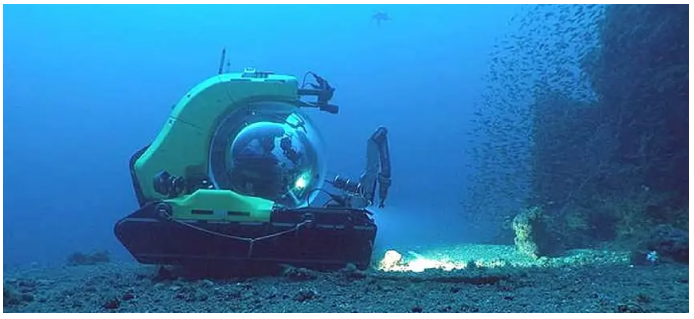- Courses
- GS Full Course 1 Year
- GS Full Course 2 Year
- GS Full Course 3 Year
- GS Full Course Till Selection
- Answer Alpha: Mains 2025 Mentorship
- MEP (Mains Enrichment Programme) Data, Facts
- Essay Target – 150+ Marks
- Online Program
- GS Recorded Course
- Polity
- Geography
- Economy
- Ancient, Medieval and Art & Culture AMAC
- Modern India, Post Independence & World History
- Environment
- Governance
- Science & Technology
- International Relations and Internal Security
- Disaster Management
- Ethics
- NCERT Current Affairs
- Indian Society and Social Issue
- NCERT- Science and Technology
- NCERT - Geography
- NCERT - Ancient History
- NCERT- World History
- NCERT Modern History
- CSAT
- 5 LAYERED ARJUNA Mentorship
- Public Administration Optional
- ABOUT US
- OUR TOPPERS
- TEST SERIES
- FREE STUDY MATERIAL
- VIDEOS
- CONTACT US
Indias Deep Ocean Mission
Indias Deep Ocean Mission
06-11-2023

Why in News?
India is preparing for a historic Deep Ocean Mission to explore and exploit the vast ocean's unexplored depths, offering significant scientific and economic benefits.
- The U.S.A., Russia, China, France, and Japan have successfully completed deep-ocean crewed missions.
Deep Ocean Mission
-
About:
- The Ministry of Earth Sciences (MoES) is launching the Deep Ocean Mission (DOM) to advance technologies and capabilities for deep sea exploration.
-
Key Pillars of the Mission:
- Technological advancements have significantly improved deep-sea mining and the use of crewed submersibles.
- Ocean Climate Change Advisory Services
- Innovations for Deep-Sea Biodiversity Exploration and Conservation
- The study focuses on the survey and exploration of deep-ocean minerals.
- The process involves extracting energy and freshwater from the ocean.
- The establishment of an advanced marine station for ocean biology is being initiated.

-
Major Advancement in DOM Objectives:
- India's Samudrayaan, a flagship deep ocean mission, was initiated in 2021 by the Minister of Earth Sciences as part of the Department of Oceanography (DOM).
- India is embarking on a groundbreaking crewed expedition, Samudrayaan, to reach a depth of 6,000 meters to the Central Indian Ocean's ocean bed.
- Matsya6000, a deep-ocean submersible designed for a crew of three, will embark on a historic journey.
- The sphere, made of titanium alloy, is designed to withstand pressures of up to 6,000 bar.

- Varaha- India's Deep-Ocean Mining System:The National Institute of Ocean Technology, under MoES, successfully conducted deep-sea locomotion trials using 'Varaha,' an underwater mining system at 5,270 meters in the central Indian Ocean.
Major Challenges
- Oceanic Pressure Challenges: High-pressure conditions in the deep ocean pose a significant challenge, putting immense pressure on objects weighing approximately 10,000kg per square meter.
- Equipment Design and Functionality: Under harsh conditions, robust materials are crucial for equipment design, as electronics and instruments operate more efficiently in space or vacuum, while poorly designed objects can collapse or explode underwater.
- Challenges of Landing: The ocean bed's soft and muddy surface poses significant challenges for heavy vehicles to land or maneuver.
- Material Extraction and Power Demands: Extracting materials from the ocean floor requires significant power and energy to pump them to the surface
- Remotely operated vehicles are deemed ineffective in deep oceans due to the absence of electromagnetic wave propagation.
- Natural light's visibility is limited, reaching only a few meters underwater, unlike telescope-facilitated space observations.
Way Forward
- Biologically-Inspired Designs: Draw inspiration from nature, such as marine organisms, for innovative engineering solutions.
- Biomimicry has the potential to create structures and materials that are naturally adapted to deep-sea conditions, enhancing their resilience and adaptability.
- Energy Innovation: The goal is to create sustainable power sources that can sustain long-term missions.
- Advancements in energy harvesting technologies, such as ocean thermal energy conversion, temperature gradients in the ocean for power, and exploring tidal and wave energy potential.
- Multi-Sensor Integration: The integration of various sensor technologies is being implemented to compensate for the limited visibility.
- The integration of sonar, lidar, and other imaging technologies could provide a comprehensive view of the deep-sea environment, enhancing navigation and exploration.
- Environmental Impact Consideration: Ensuring that exploration initiatives are conducted with minimal impact on deep-sea ecosystems.
- The international regulation and policies governing deep-sea exploration aim to ensure responsible and ethical practices, balancing scientific advancement with environmental conservation..
Must Check: Best IAS Coaching In Delhi



